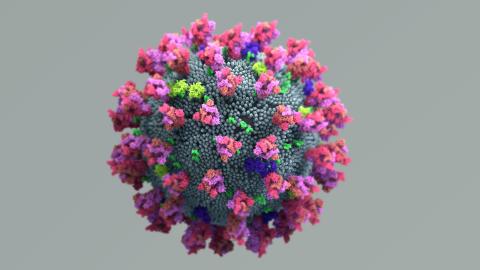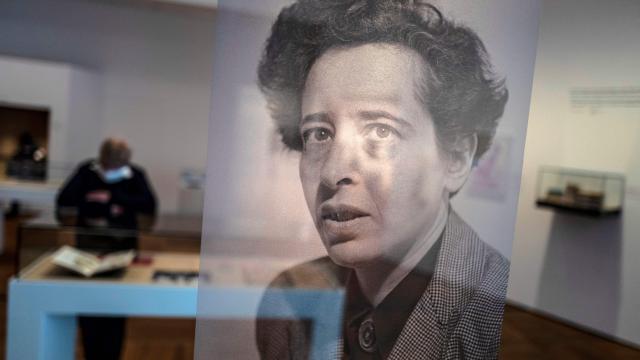MIT study shows ultrasound vibrations may kill coronavirus

Credit: Design Cells via AdobeStock
- The researchers created computer models of the likely structure of the SARS-CoV-2 virus, and then subjected those models to various ultrasound frequencies in a simulation.
- The results showed that key parts of the virus ruptured at specific frequencies.
- More research is needed, but the authors noted that the frequencies that damaged the virus fell within a range that’s known to be safe to humans.
Since the COVID-19 pandemic struck in 2020, scientists have focused on several strategies to contain the spread of the virus: masks, social distancing and vaccines. But are there other ways science might help shield people from the virus?
One method may lie in acoustics. In a recent study published in the Journal of the Mechanics and Physics of Solids, researchers used computer models to test whether ultrasound vibrations might be able to damage or kill the SARS-CoV-2 virus.
Ultrasound are sound waves that have higher frequencies than are audible to humans. Medical professionals often use ultrasound for diagnostic imaging; By transmitting ultrasound through the body, they can use devices to record the sound waves that bounce back, which creates images of the inside of the body.
But ultrasound can also be used therapeutically. For example, through a technique called lithotripsy, doctors can use ultrasonic waves to pulverize large kidney stones into smaller pieces. It’s similar to a trained opera singer who’s able to shatter a wine glass by singing loudly at a specific pitch.

Reconstruction of the 3D model of the spike-decorated Influenza A virus from 2D photographs. Top view (a) and side 3D image. The plane ultrasound harmonic wave is perpendicular to the axis of the sphere joining the North and South Poles.Credit: Tomasz Wierzbicki et al.
In the new study, researchers explored how ultrasound might have the same kind of effect on the SARS-CoV-2 virus. Although scientists still have much to learn about the exact structure of the novel coronavirus, the researchers were able to build models of the new virus based on the known structures of other coronaviruses.
“Nature has endowed viruses with a beautiful and dangerous feature – the crown,” the researchers wrote. “Many enveloped viruses including influenza, HIV, and SARS belong to this family. The crown is composed of densely packed receptors, commonly named spikes. They are not just for decoration. The receptors play an essential role in the reproductive cycle of the virus. They bind with their counterparts of the invaded cell and initiate the mechanism of injecting the deadly genome into the cell.”
The researchers created various models of the novel coronavirus, and then used computer simulations to determine the frequencies at which acoustic vibrations might damage key parts of the virus, namely the shell and spikes. The results showed that ultrasound vibrations between 25 and 100 megahertz caused the shell and spikes to rupture almost immediately.
Ultrasound has potential to damage coronavirusesyoutu.be
“We’ve proven that under ultrasound excitation the coronavirus shell and spikes will vibrate, and the amplitude of that vibration will be very large, producing strains that could break certain parts of the virus, doing visible damage to the outer shell and possibly invisible damage to the RNA inside,” Tomasz Wierzbicki, professor of applied mechanics at MIT, told MIT News. “The hope is that our paper will initiate a discussion across various disciplines.”
Still, more research is needed before ultrasound can be used as a preventative or therapeutic treatment for the novel coronavirus. But the results are promising, in part because the ultrasound frequencies that damaged the coronavirus fell within a range that’s considered safe for humans.

Credit: Marco via Abobe Stock
If future research validates ultrasound techniques, they could become a valuable weapon in the fight against coronaviruses, the authors noted.
“The acquired immunity provided by the vaccine recently developed by Pfizer and Moderna would be an ideal solution to fight SARS-CoV-02. But it would be just temporary because the emergence of new mutations or strains would require the development of new vaccines, as occurs seasonably with the influenza virus, with an investment of time of one year.”
“In this paper, we presented a new concept of using ultrasound and mechanical resonance to target SARS-CoV-2 and other enveloped viruses that do not have this time limitation. Currently, we have only outlined the promising first step of this ambitious project that would require more profound interdisciplinary research.”





